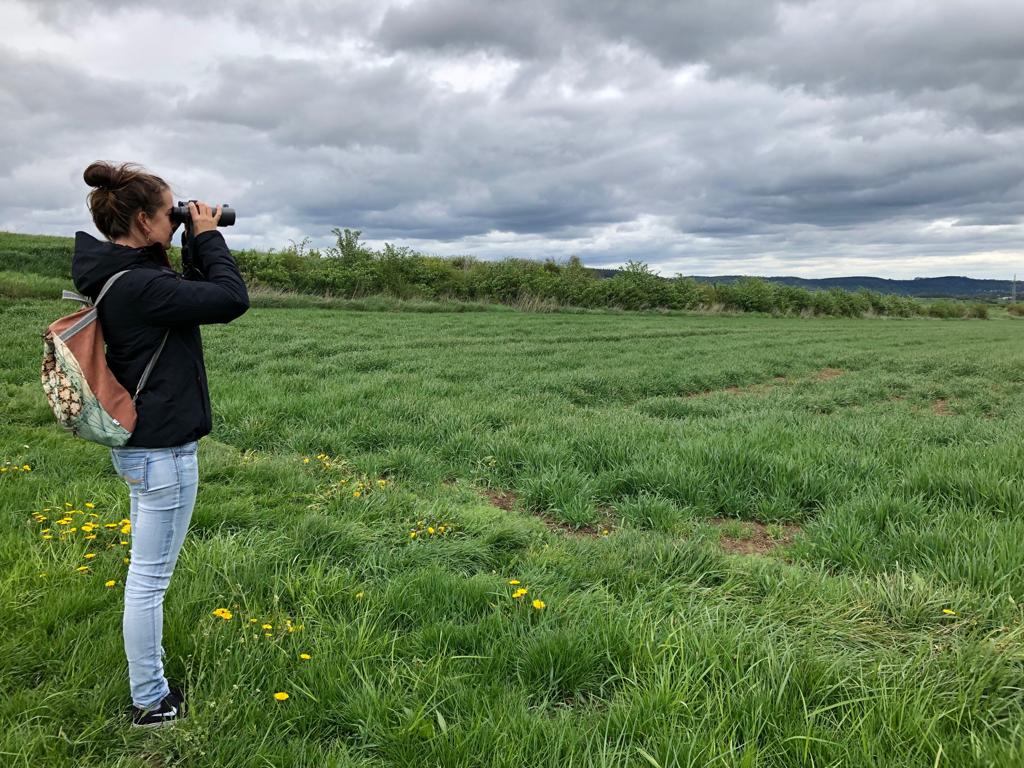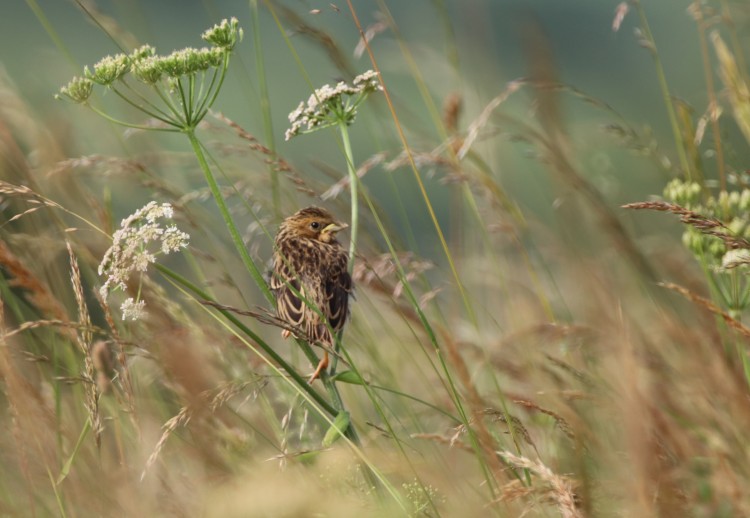Successfully protecting birds in rural areas
The Rhine Plain, near the German city of Mannheim, end of May, 8:30 a.m. For more than two hours, Julia Staggenborg has been painstakingly following an inconspicuous corn bunting with her ZEISS binoculars. She didn’t dare look away, even for a second, since a brief moment of inattention could undo an entire morning’s worth of hard work. Julia was tracking a female corn bunting. She had spotted the bird, bearing a load of dry grass in her beak, just after setting out that morning. This particular specimen was obviously busy building a nest, and Julia wanted to identify its location.

Julia has been working at the University of Tübingen on a project to protect the corn bunting since 2017. The seemingly unremarkable species of bird is considered a characteristic species for extensive, wide-open agrarian landscapes. Particularly in areas like these, it’s especially difficult to effectively combat large-scale biodiversity loss.
The verdict is still out on which environmental protection measures ensure suitable habitats. Frequently, very specific requirements must be met if the land is to sustain a particular plant or animal species. In many cases, little detailed information is available. ZEISS has been supporting the species conservation project since 2016.
Based in the different regions and funded by the Stiftung Naturschutzfonds Baden-Württemberg, a foundation devoted to the protection of wildlife in the area, the project has been able to come up with appropriate conservation measures on the basis of the Corn Bunting’s activities. Working together with farmers as well as environmental protection and agriculture agencies, suitable funding measures have been developed and are being refined in an ongoing process in line with the corn bunting’s needs.
The project team members have been paying particular attention to successful breeding. The corn bunting breeds late in the year, which is especially problematic in agricultural regions because the fledging period frequently conflicts with farming activities. Precisely for this reason, Julia wanted to find out for sure if the bird’s nest in the Rhine Plain was actually located in the farmer’s field. The first hay harvest of the season was scheduled to start the following week, which would invariably destroy the nest.
Or was the nest actually located within the winter barley growing on the adjacent field? If so, then there was no immediate risk because the young corn buntings would have long since left the nest before the start of the harvest.

The corn bunting is a true homebody during the breeding period. If the bird notices a passerby or a bird watcher, it lets out a warning cry and ceases any activities in the nest, even if the person is still a considerable distance away. This makes it difficult to spot them, their nests and, consequently, to implement targeted measures to protect them. Thanks to good cover and a high-performance optic, Julia’s conversation efforts paid off.
Potential conflicts between the bird’s particular nesting sites and agricultural needs are just one of the issues being studied. The project members are also focusing on the question of if and where the corn bunting can find sufficient food to feed its chicks, i.e. insects and their larvae. So Julia observes the female birds as they fly in search of food, carefully documenting where they find small butterfly caterpillars or large green grasshoppers to take back to their nests. To be sure, plenty of foliage and fallow ground are quite important, but even areas like conventional farm fields covered with winter wheat offer a surprisingly large food supply for the corn bunting.
The project’s initial findings also reveal substantial regional differences, a clear sign that no single measure will guarantee a happy outcome for the corn bunting or other endangered species living in rural areas dominated by agriculture.
At 8:53, the female corn bunting returned again with more material for her nest. It was evident that she was building it under a prominent knapweed plant in the hay field. The same afternoon, Julia contacted the farmer, who agreed to postpone the harvest in that part of the field by three weeks in return for compensation from the environmental protection authorities. The mother corn bunting and her brood were saved.
About Post Author
Visits on this Page:2201

